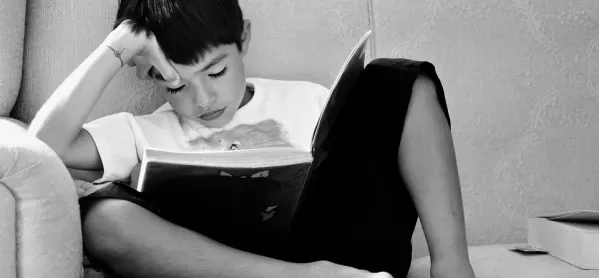Literacy is the foundation of knowledge, but it is also the key to social mobility.
By Year 7, a so-called “literacy gap” is already evident. While most students are able to decode and comprehend text and can, therefore, acquire facts, practise processes and develop opinions, others need more support.
These students may read slowly, write illegibly and be unable to access learning. As they watch their friends progress, they quickly lose confidence, and may switch off from education completely. The gap between these students and their peers widens and it becomes increasingly difficult (and draining on resources) to help them catch up.
The Education Endowment Foundation states that being proficiently literate is “key to learning across all subjects in secondary school and a strong predictor of outcomes in later life”. It suggests that when pupils fall behind, teachers should “expect and proactively plan” to support them with appropriate interventions.
By ensuring that every child has basic literacy at key stage 3, schools save significant resource, exponentially increase students’ chances of success in life, and close the literacy gap.
Tackling the literacy gap at home
However, providing the necessary support is a real challenge at this time, when schools are closed and students are learning from home.
The students who struggle the most with basic literacy skills are statistically more likely to be those from socially disadvantaged backgrounds. While the most fortunate students will spend the coming weeks selecting teenage novels from their bookshelf, others are confined within a house of limited language, with carers who may lack the ability to provide support.
Intervention is arguably more important now than ever, both during the current lockdown and when pupils return to school. But what should this intervention look like while students are still learning at home?
The foundations of literacy
The framework that I will be using to strengthen the foundations of literacy for those students in my class who need extra support takes intervention best practice and adapts it to a home learning context. Here’s how I plan to do it.
1. Identify a manageable number of students (think: small number, high impact).
2. Establish contact with home, explore the home-learning environment and get buy-in from both parent and student.
3. Diagnose the skill gap specifically, and the type of intervention required. Examples of common literacy skill gaps at KS3 may be:
- Student pauses when reading or misspells basic words, suggesting a decoding skill gap. Phonics intervention is required.
- Student misspells complex words/homophones, suggesting a word recognition skill gap. Guided reading practice and vocabulary expansion are required
- Student does not write on the line/in legible letters, suggesting a fine motor skills gap. Guided handwriting practice is required.
- Student does not use full stops and capital letters, suggesting a basic grammar skills gap. Teaching of sentence structure is required.
4. Provide targeted tasks. Some resources I use are:
5. Monitor a student’s improvement in the skill on a weekly basis, on the phone or through simple assessment.
Though making contact with home does have its challenges, the parents and students I have spoken with so far seem hopeful about what could be achieved. They are, as I am, grateful for an optimistic outlook in otherwise uncertain times.
Lucy Williams is an English teacher at The City Academy in Hackney, East London
